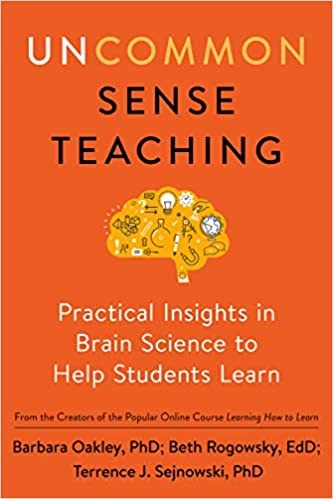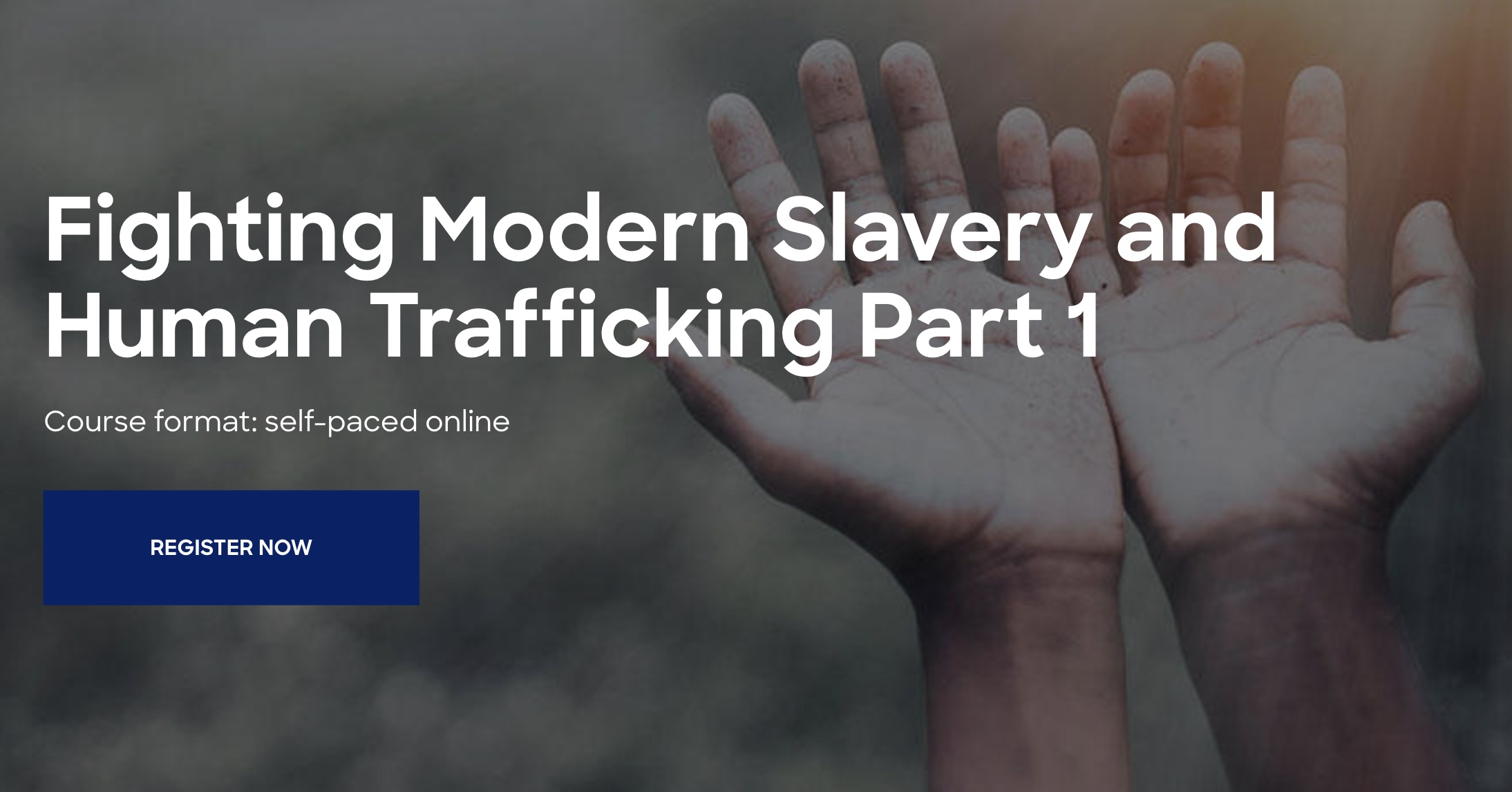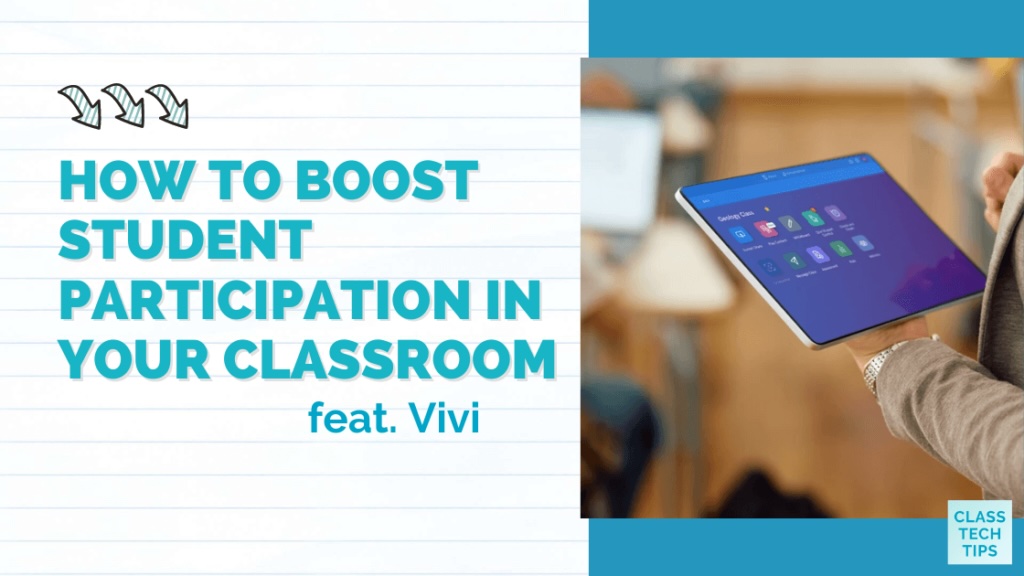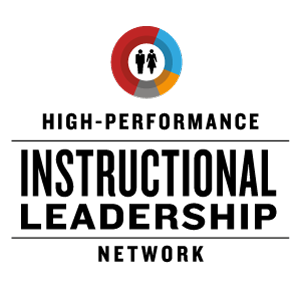The World Is Open: How Web Technology Is Revolutionizing Education by Curtis Bonk tells the story of the ten openers that allow the Internet to change the face of education. Bonk builds on the work of Thomas Friedman’s The World Is Flat to explain how anyone can learn anything, anytime, anywhere. He uses abundant stories and examples to make his point. As you read you will want to check out places on the Web he mentions. Any educator, parent, student, or citizen should be familiar with Bonk’s Ten Openers. © 2009, Jossey Bass: San Francisco, CA.
Archive for the ‘What can Dr. Doug do for you?’ Category
The World Is Open – Curtis Bonk
Wednesday, March 30th, 2011Three Cornerstones to Consider When Choosing an Essay Writing Company by Lucy Adam
Friday, June 9th, 2017
Three Cornerstones to Consider When Choosing an Essay Writing Company by Lucy Adam from the UK offers a look at an industry that is no doubt much larger than most educators realize. She also gives good advice for choosing and working with these companies. While I don’t recommend passing someone else’s work off as your own for a grade or college admission, I do think that getting feedback from a professional writer is a great way to improve your own writing.
Why Students Pay for Essays
- Why Students Pay for Essays: According to statistics, essay writing is one of the most quickly developing niches in the writing business. Let’s face it – the essay writing industry is worth over 128 million dollars or 100 million pounds and is expected to grow further in the future. For example, the two biggest UK essay mills process more than 20,000 orders a year!
- This undeniable popularity of essay writing services opens great perspectives for both writers and clients. The latter, however, are always in danger, as they can never know what to expect from the ubiquitous companies on the market. In fact, paying for an essay is basically gambling, as in 90 cases out of 100 you cannot be sure of the reliability of a company that you are using for the first time.
- But is buying an essay a worthwhile option? How to make sure that the company provides the best value for money? How to hit the bull’s eye when ordering an essay for the first time?Below are three cornerstones to consider before making your first order.
#1 Type of Agency
- The first thing you will encounter is the company’s website. Ideally, it should be neat, understandable and contain detailed information about the service. If you are satisfied with what you see, compare the type of work you need with the services provided by the agency. Some companies sell ready-made papers, while with others you give detailed instructions to writers in order to explain to them what exactly you need. The big advantage is that you can ask the author to adapt his or her writing style to match yours so that the paper will not look like a sudden huge leap from “D” to “A” level work.
- Moreover, a reliable writing company must ask you about your class and writing skills, not to mention the paper guidelines. If you are not requested to send a sample of your previous essays, how can you be sure that the future work will suit you? Decide what you need. A custom essay, essay help, research paper, term paper, homework help or proofreading? When it comes to essays, they can be narrative, descriptive, expository, persuasive, argumentative, analytical, etc. The more detailed the guidelines, the easier the essay writing and the less you will be charged.
#2 Reputation
- Apart from feedback, the best way to check whether a service is reputable is to test its customer support. It most likely operates via email. If so, make an enquiry and wait for a response. It should come very quickly and contain a detailed explanation of the issue. If that does not happen or is delayed, think twice before ordering an essay from this company. You must be able to get in touch with them whenever you need, 24/7.
- As for reviews from previous clients, it is better to check them personally by contacting a few satisfied customers from the list. Unfortunately, many companies pay strangers to write feedback. Another sign of reliability is the amount of personal information requested. If the company asks for data that you think they do not need (for example, your social security number, phone number or birthday), these people may want to make money off your identity.
#3 Rates, or Value for Money
- To get the best value for money, pay attention to the following:
Are Ph.D. and MA writers onboard?
Do you have an opportunity to choose the author and communicate with him or her yourself?
Is there a rating system showing the best writers alongside the price?
Is it possible to get a free sample to assess the level of writing and general look of an academic paper? - The price may seem to be crucial, but this is only at first glance. Purchasing based on price alone, you have a high chance of failure, especially when it comes to admission essays. If you need writing help only once, is there really a good reason to save money? Do you care how much you will spend on a ticket to Oxford, Cambridge or any other university that you have been dreaming about for a long time?!

The Conclusion, or Do Ethics Matter?
- Being a conscientious student (which I hope you are), you cannot help but consider the ethical side of paying for an essay. The problem is a complex one and everything depends on your personality. Cheating is bad, no doubt, but haven’t you asked yourself how fertile the ground must be to generate hundreds of essay mills all over the world, not just in the UK and USA? Don’t you think that worldwide educational problems are too significant to pretend that there is a level playing field?
- How many chances do non-natives have to outperform natives in essay writing? What about students engaged in voluntary activities? What about those who have personal problems? Do they deserve special conditions? Is education personalized enough? Is it fair and capable of providing students with relevant, up-to-date knowledge that will remain in demand for at least the near future? Since these and many other burning questions remain unanswered, don’t blame yourself too much for paying for an essay. Life isn’t fair and only the strongest will survive
Lucy Adam
- Lucy is a blogger and aspiring writer. This diligent and responsive author is always ready to bring intriguing topics to life. Lucy covers materials on education, writing, literature, and many other niches. Don’t miss this brilliant chance to start a mutually beneficial collaboration with her. lucyadams@buzzessay.com
Dr. Doug’s Take on Buying Essays
- While I generally don’t favor submitting work you have purchased as if it is your own, I think it’s important for my readers to understand that this goes on and how the system works. Here are some questions I suggest you and your students consider in addition to the thoughts offered by Lucy.
- 1. Rather than leveling the playing field, doesn’t purchasing essays tip it more in favor of students with means and against poor kids?
- 2. If your purchased admissions essay gets you into a better school where you can’t compete, will you be more likely to drop out than if you went to a school that your real skills can get you in?
- 3. I would hope that most teachers would have students submit writing samples done entirely in class along with outside assignments. This would allow the teacher to see each student’s skill level, which they could compare to submitted work done outside of class. Would this cause more kids to get caught cheating?
- 4. It seems that going through the process of selecting an author, providing him or her with a sample of your writing and negotiating topic and price would be a valuable experience that requires critical thinking and problem solving. As a result, the student could be building skill for life in the real world.
- 5. Would it be possible for a service to help a student edit a piece or writing? This wouldn’t involve any more cheating than kids do when they ask a parent or friend to read what they have written. I know my wife read everything my daughter wrote for submission and gave her suggestions for making it better. She also proof read everything I wrote while I doing working on my doctorate. Getting good feedback from a professional writer is valuable. If you can afford to purchase help, this is what I suggest.
Three Tips for Opening a Flourishing Business While Caring for Your Baby by Emily Graham
Saturday, August 27th, 2022
Three Tips for Opening a Flourishing Business While Caring for Your Baby by Emily Graham
Welcoming your baby into the world is one of the most exciting and memorable times of your life. However, this amazing yet exhausting time can prove extra stressful when trying to get a company off the ground. If you want to make your business ownership dreams a reality and still bond with your bundle of joy, these tips from Dr. Doug Green’s blog can help.
1. Prep the Night Before
Preparing as much as you can at night for the following day saves you time and helps your professional and personal tasks go much smoother the next day. Make a list of tasks that can be done ahead of time.
Lay out the baby’s outfitbaby’s outfit the night before with a couple of spares in case of accidents. Have clean burp rags handy, and stock diapers and wipes. Make sure bottles are clean and any frozen milk is put in the fridge to defrost.
Be sure your clothes are also ready for the next day. If you have a coffee maker that runs on a timer, load the coffee and set the timer, so your cup of joe is hot and ready when you awake. Prep as much food as possible so that when it is time to eat, your entree is mostly or completely done.
2. Redesign Your Office
Whether your office space is an entire room or the corner of your bedroom, update your workspace to accommodate your little one. There are times throughout the day you pull double duty as a parent and entrepreneur, so a few tweaks to your office can make the adjustment much easier.
Add a rocker or bouncer to the office, such as a baby swing or bassinet. According to What to Expect, babies sleep 12 to 17 hours every 24 hours, depending on their ages. So chances are, your kiddo is going to take some naps throughout the day. This gives the baby a place to snooze while you are hard at work.
Have a mat and box of toys ready to go should your little one want to play. You may need to add a fence once your tike becomes mobile. Finally, be sure to remove any breakable or dangerous objects from the baby’s play zone.
If the office is simply not functioning for the two of you, it may be time to list your home and purchase one that meets your needs. If you are going to own a business, you must be able to work comfortably while keeping your child safe. Make a list of the new office requirements for your real estate agent so he or she knows exactly what you need.
3. Utilize Helpful Services and Tools
Finding help takes a portion of work off your plate. A great example is a formation service that can help you complete and process a limited liability company application. Setting your business up as an LLC has numerous advantages, including less paperwork, limited liability, increased flexibility, and tax advantages.The regulations around forming an LLC vary by state, so know your state’s rules before proceeding. Once you are ready to move forward, hiring a formation service saves you lots of time; plus, you avoid the hefty fees that a law office charges.
Look for ways to make your business more cost and time efficient. Instead of hiring a graphic designer, you can use a logo design tool to create free online logos. This tool offers thousands of professionally designed logos that you can customize. Or you can use images, icons, and other design elements to enhance your current logo. And a PDF joiner may help to organize the multiple documents you and your team are juggling for a client. Instead of searching through dozens of digital documents, you can merge PDFs into one living document during your team’s process. Then, you can formalize the document and it will be ready for your client.
While this momentous time in your life may have more stress than you would like, you can still have a flourishing career as a business owner and be a dedicated parent. Following these three tips can help you achieve success both in the workforce and at home. And you can visit Dr. Doug Green for additional tips for parents and EDUCATORS.
Emily Graham
Emily is the creator of MightyMoms.Net. She believes being a mom is one of the hardest jobs around and wanted to create a support system for moms from all walks of life. On her site, she offers a wide range of info tailored for busy moms — from how to reduce stress to creative ways to spend time together as a family. You can email her at emilygraham@mightymoms.net. She lives in Arizona.
Top 10 Tips for Test Preparation by Craig Middleton
Saturday, April 4th, 2020
Top 10 Tips for Test Preparation by Craig Middleton offers sound advice for parents so they can help their children do their best on tests given by their teachers and standardized tests like the SAT and the ACT.
Testing scores are an important part of any child’s school experience. These scores allow a regular classroom teacher to evaluate a student’s progress and recognize any areas that may need more attention or improvements. Testing is an effective way to measure progress and to make sure that the child is able to communicate effectively. It can also be a way to recognize and discover learning disabilities in certain situations. Testing is also important when it comes to pursuing higher education as it is a big factor in college admissions. To ensure that your child does his or her best, take measures to ensure that they are adequately prepared for any tests so that they may do their best.
Sleep
- Proper sleep is absolutely necessary, especially on the night before a big and important test. If your child is well-rested they are more easily able to focus and concentrate on the test.
Breakfast
- Breakfast is another essential part of preparing for a test day. Make sure that your child has had a good breakfast the morning of the test so that they are full and have the energy they need to stay alert. Hunger can be distracting and lead to sub-optimal performance.
Organization
- Good organization is another tip in preparing for a test. Make sure that your child has all the necessary testing materials such as pencils, erasers, pens, calculators, and any other equipment that has been recommended. Have all of these things gathered ahead of time and ready to go to avoid last-minute stress and scrambling to find missing items.
Tutoring
- A good way to prep for testing is to get additional instruction. Tutoring in addition to regular classroom preparation may help the child achieve greater results. Consider this option for ongoing education but especially for ACT Prep.
Positive Attitude
- Stay positive and make sure that you maintain an upbeat attitude for both yourself and your child. Be a good example and show them that the test is necessary and important, but not a reason to become upset and dread what is to come. Help them keep an elevated mood so they’re excited and ready to go.
Teacher Conferences
- Consider having regular conferences with a student’s teacher. This will keep you up-to-date on their current academic levels and let you know if any additional instruction would be beneficial. Conferences open communication with the teacher to allow you both to work together more efficiently and will give you an idea of what to expect for future performance.
Relax
- t’s also important to make sure that your child is relaxed. Ensure that they are not overly anxious over the upcoming test. Help your child to stay calm and be mentally prepared so the stress doesn’t become overwhelming.
Homework
- Make sure the child is current with all of their homework. Having all the work done on time will help them learn to be responsible and prepared and will keep you up-to-date with the materials that may be covered on the tests.
Test Format
- Test formats can vary greatly and if your child is already stressed over the thought of taking a test, an unexpected or new format may cause them unnecessary anxiety. Make sure that the student is familiar with the test format so there are no surprises and so that you are sure they understand how to fill out the form and complete all tasks.
Practice Tests
- Take advantage of any practice tests that may be available. Many of the larger tests, such as the ACT, offer practice tests, or you can create your own for smaller tests. A practice test will give your child an idea of test format, time limits, and topics that will be covered. This allows the students to be better prepared and comfortable so they can relax and do their best.
- The more prepared your child is the more likely they are to do well on their tests. Familiarize yourself with the entire procedure so that you can help your child prepare and reach their full potential.
Craig Middleton
- Craig is a New York City-based retired business consultant, who is an expert in education and cultural trends. He has a Masters of Business Administration and a Masters in Education from St. Johns and loves sharing his knowledge on the side through his writing. If you have any questions or comments you can direct them to Craig at craigmiddleton18@gmail.com.
Uncommon Sense Teaching: Practical Insights in Brain Science to Help Students Learn by Oakley, Rogowsky, and Sejnowski
Monday, November 29th, 2021
Uncommon Sense Teaching: Practical Insights in Brain Science to Help Students Learn by Barbara Oakley, Beth Rogowsky, and Terrence Sejnowsk
t explains how the brain works when it learns. It also offers lots of practical real world advice for teachers and learners of all ages. No school professional development library should be without it.
1. Building Memory: How Students Fool Themselves into Thinking They’re Learning
- Information in working memory generally goes away when we stop thinking about it. This can fool students into thinking they really know something. What they need to do is right after they have encountered new information, they should see if they can retrieve it from long-term memory. Retrieval practice is one of the best techniques for strengthening new information in long-term memory. The more times you retrieve something the stronger your memory of it will be. Students should jot notes about what they just learned and compare their notes with other students. Retrieving information from previous days or weeks is called spaced repetition, which further strengthens long-term memory.
2. Teaching Inclusively: The Importance of Working Memory
- Not all students have the same amount of working memory. For those with less, it’s vital to build their long-term memory, which will make the short-term memory they have more efficient. Working memory increases over time until children reach the age of about 14. Engaging students’ interests makes learning more effective while stress gets in the way.
- Slower learners can benefit from reteaching, giving them more time to practice, giving them outlines to take notes on, and breaking things down into simpler steps. For faster learners go beyond factual questions, have them work together, increase the complexity of assignments, have extra activities for them to do, and let them devise their own activities. This helps you differentiate your teaching. In all cases, active practice should break up teacher talk.
3. Active Learning: The Declarative Pathway
- Research shows that active learning is much more effective than simply listening to an expert. Note that not all hands-on activities are considered to be active learning. Active Learning engages students in the process of learning through activities and/or discussions in class. It emphasizes higher-order thinking and often involves group work. The foundation for conceptual understanding and creative thinking is the storage of basic facts and procedures in long-term memory. Note-taking and retrieval practice facilitate this process.
- Long-term memories are stored in the neocortex, which is the big front and top of your brain. The process is facilitated by the hippocampus, which is composed of two small bean-shaped pieces at the base. It acts as an index while the connections of neurons that store memories are being made. Retrieving recently stored memories serves to help consolidate the information. Much of this consolidation occurs while we are sleeping. Brief breaks of even less than a minute can help students make sense of new material. Index links from the hippocampus dissolve after a while, which is why cramming the night before doesn’t work as there is no time for consolidation.
- Frequent formative assessments, low-stakes tests, homework, and exercises can all help with retrieval. Daily physical exercise of an hour or more helps with the formation of neuron connections. Be sure to tap into prior knowledge. Use the think-pair-share method when teaching. Students will find that working in pairs or groups of three or four is more effective than larger-sized groups. If possible, pick a shy person from a group with the right answer (or a good answer) to present to the class.
What Is Covered in a Human Trafficking Course? by Kathleen Zara
Sunday, July 17th, 2022Free Resources for Busy Parents and Educators Who Don’t Have as Much Time to Read and Surf as I Do
 What Is Covered in a Human Trafficking Course? by Kathleen Zara explains why at least one person in every school district should take such a course. Be sure to share it with leadership in your school district.
What Is Covered in a Human Trafficking Course? by Kathleen Zara explains why at least one person in every school district should take such a course. Be sure to share it with leadership in your school district.
Human trafficking has become an international issue that is gaining more attention yearly. On the international level, South and Central Asia was the region with the second-most trafficking victims in 2019. Businesses need to be aware of what it is and how to identify it. This article will discuss the different things covered in a human trafficking course.
1. The Definition
It is the recruitment, transportation, transfer, harboring, or receipt of persons using threat or use of force or other methods of coercion, abduction, fraud, deception, abuse of power or position of vulnerability, or giving payments or benefits to get the consent of a person having control over another person for exploitation.
Exploitation is prostitution or any other forms of sexual exploitation, forced labor or services, slavery or similar practices, and the removal of organs.
2. How to Identify Victims
The course will cover identifying potential victims of human trafficking and the signs that may indicate that someone is being trafficked. It includes looking for patterns of control, exploitation, and victimization.
It is essential to identify victims because they are often hidden in plain sight. They may be working in massage parlors, nail salons, or factories. They may be living in homes with many other people and not have any personal belongings. They may also be moved around frequently and have few close friends or family members.
If you see someone you think may be a victim of it, the best thing to do is reach out to organizations that can help, such as the National Human Trafficking Hotline. (888 373-7888) They can support victims and connect them with resources in their area.
3. The Different Forms That Human Trafficking Can Take
It is crucial to know the different forms that human trafficking can take to identify it. It can include sex trafficking, forced labor, organ trafficking, or domestic servitude. Sex trafficking happens when someone is forced or coerced into sexual activity. It can happen through force, fraud, or coercion. Victims of sex trafficking can be children or adults of either gender.
Forced labor is when someone is made to work against their will through force, fraud, or coercion. It can happen in many industries, such as agriculture, manufacturing, construction, and domestic work. Organ trafficking is when organs are removed from a person for transplantation.
4. What Businesses Can Do to Help Prevent and Report Instances
You can learn how to prevent it in your business and what to do if you witness or suspect it. This knowledge is critical for business owners, employees, and managers. You’ll also learn about the signs of trafficking and how to report it.
5. Due Diligence, Victims, and Perpetrators
The human trafficking course covers a variety of topics related to crime. These can include due diligence measures businesses can take to ensure they are not complicit in trafficking, how to identify victims of trafficking, and profiles of typical perpetrators. The goal of these courses is to help participants better understand the issue and try to prevent them.
Conclusion
Whether you are searching to start a career or want to learn more about human trafficking, taking a certified course is a great way to gain knowledge and skills. A comprehensive online course will identify victims, understand legal issues, and develop victim-centered responses.
Kathleen Zara
Kathleen works as a freelancer and entrepreneur working from a start-up learning along the way about marketing, social and networking, creating Web sites, and web content. @ACAMS_AML
What Schools Should Be Teaching About Nutrition by Craig Middleton
Friday, January 24th, 2020
What Schools Should Be Teaching About Nutrition by Craig Middleton covers some of the basics of nutrition that schools should consider adding to their formal curricula. While there is a lot more to know, this is a good place for you and your kids to start.
Introduction
- For a long time, many educators have pleaded that schools should teach more about problems that children will run into when they become adults. Adult challenges that some schools have started preparing students for include finances and general computer classes like teaching office software for example. Often disregarded is nutrition even though physical education is still typically required. Whether a school decides to integrate nutrition into their physical education or health classes or create a separate class, it should be part of every school’s formal curriculum.
The Truth About Sugar
- Added sugar has been increasingly seen in more foods than ever in the United States and around the world thanks to initiatives like the U.S. Sugar Program. Making sure you don’t consume too much sugar is important as it can cause many different issues such as cavities, weight gain, and even diabetes. Teach kids how to read labels on food products so they can limit how much sugar they consume on a daily basis. Additionally, have them avoid or very sparingly consume high sugar products like soda and instead consume better alternatives like green tea or just water. Cutting down on sugar is one of the best ways you can live a nutritious lifestyle.
The Truth About Protein
- Protein is a very important factor when building a diet for yourself. While protein is in so many foods, make sure to know which types of foods have the most like eggs, milk, beef, pork, fish, or chicken so you are able to build a well-balanced diet. Without protein, you can have deficiency issues that can stunt growth and make you more susceptible to infections. Additionally, you’ll want to eat more protein anytime you get into weightlifting as protein is what will help you build muscles. Make sure you fully understand protein when you want to know about proper nutrition.
The Truth About Dairy
- Dairy is the group of products made out of the milk of mammals such as cows, goats, sheep, and more. These products all include cheese, milk, butter, ice cream, and more, and you probably have at least one of these on a daily basis. If you’ve ever had stomach problems, for example, make sure you don’t have lactose intolerance. Lactose is a sugar found in dairy products and the enzyme lactase is needed by people consuming dairy products to digest them without problems. Make sure you don’t have lactose intolerance when consuming dairy products and if you do, consider ways you can still have dairy products such as taking lactase supplements or going for lactose-free products. Understanding dairy products is important when living a nutritious lifestyle.
The Truth About Cell Health
- Cell health is important as the more healthy your cells are the more energy you will have and the easier time you will have maintaining your target weight. Following proper cellular nutrition is important in gaining positive cell health. To do this, you’ll want to go for plant-based nutrients (fruits and vegetables) that will trigger your cells to become more healthy. Once you’ve started incorporating plant-based nutrients into your diet, you’ll see results down the line. Ensure that your cell health is good when you want to live a healthy nutritious lifestyle.
Conclusion
- No matter what age the children you’re responsible for teaching are, it’s always a good time to start teaching about nutrition. While many kids won’t be able to plan their own diet until they become young adults, some will be able to pass on what they learn to their parents so they might cook better for them. Teaching nutrition at a younger age can also get them to be dead set on following a stricter diet once they are cooking on their own. Building knowledgeable kids for the future will make them happier and healthier adults.
Craig Middleton
- Craig is a New York City-based retired business consultant, who is an expert in education and cultural trends. He has a Masters of Business Administration and a Masters in Education from St. Johns and loves sharing his knowledge on the side through his writing. If you have any questions or comments you can direct them to Craig at craigmiddleton18@gmail.com.
Bard Does a Lesson Plan – If You Are Still Teaching, You Should Use This.
Thursday, November 16th, 2023
I asked Google’s Bard to “Prepare a lesson plan to teach the quadratic equations at the high school level.” Below is what I got back. My conclusion is that if I were still teaching, I would always ask for Bard’s plan before I made my own. I might not use Bard’s plan, but I would look to it for ideas. I would certainly share the Additional Resources links with my students. If you are still teaching, why aren’t you doing this? This is probably more detailed than your real lesson plans and will impress your principal.
Lesson Plan: Quadratic Equations
Grade Level: High School
Subject: Algebra II
Time: 50 minutes
Learning Objectives
Students will be able to identify and define quadratic equations.
Students will be able to graph quadratic equations.
Students will be able to solve quadratic equations using factoring, completing the square, and the quadratic formula.
Students will be able to apply quadratic equations to real-world problems.
Materials
Whiteboard or projector
Markers or pens
Graph paper
Calculators (optional)
Worksheets (optional)
Procedure:
Introduction (5 minutes)
Begin by asking students what they know about quadratic equations.
Elicit responses from students and provide a brief overview of the topic.
Explain that quadratic equations are polynomial equations of the second degree, meaning they have a highest power of 2.
Identifying Quadratic Equations (10 minutes)
Display a variety of equations, some quadratic and some not.
Ask students to identify which equations are quadratic and explain their reasoning.
Provide examples of quadratic equations in various forms, including standard form, factored form, and vertex form.
Graphing Quadratic Equations (10 minutes)
Review the concept of graphing equations in general.
Introduce the concept of the axis of symmetry for quadratic equations.
Demonstrate how to graph quadratic equations using vertex form.
Allow students to practice graphing quadratic equations on their own or in pairs.
Solving Quadratic Equations (20 minutes)
Introduce three methods for solving quadratic equations: factoring, completing the square, and the quadratic formula.
Explain each method step by step, using examples to illustrate the process.
Provide students with practice problems to solve using each method.
Real-World Applications (5 minutes)
Discuss real-world situations where quadratic equations can be used to model problems.
Provide examples of such problems, such as calculating the height of an object launched into the air or determining the profit or loss of a business venture.
Encourage students to think of their own examples of real-world applications of quadratic equations.
Closure (5 minutes)
Summarize the key points of the lesson.
Review the different methods for solving quadratic equations.
Encourage students to ask any remaining questions.
Assessment
Observe students’ participation in class discussions and activities.
Collect and review worksheets or homework assignments.
Administer a quiz or test to assess students’ understanding of the material.
Differentiation
For students who need more support, provide additional practice problems with worked-out solutions.
For students who are ready for more challenging material, introduce the concept of complex numbers and solving quadratic equations with complex roots.
Additional Resources
Quadratic Equations
Solving Quadratic Equations
Real-World Applications of Quadratic Equations
Dr. Doug Green’s Advice to Prospective Parents
Monday, June 27th, 2022
Dr. Doug Green’s Advice to Prospective Parents
Twitter: @DrDougGreen
Introduction
- I was recently invited to a baby shower for my massage therapist. In addition to a card and some money, I included the following advice. It was very well received and appreciated so I thought I would share it with the readers of this blog who can pass it along to any expectant parents and parents of young children they know.
Congratulations
- Congratulations on almost being parents. While I’ve only raised one child my wife and I must have done something right given her success in the New York City art scene. I think the big idea is to always encourage, and never discourage.
Don’t Stifle Artistic Interests
- When my daughter told us she wanted to “make cartoons” when she was five it would have been easy to pooh pooh the idea and not support it as neither of us were artistic and we both had other ideas about our child’s career options. Our vision, however, was to do just the opposite.
- We made sure that she always had lots of art supplies, took her to every museum possible, paid for some private art lessons, and sent her to a summer program at the Ringling School of Art and Design prior to her senior year in high school.
- We then helped her with her application to Pratt Institute in Brooklyn, NY and dug deep to pay for it. After graduating with high honors she has been working nonstop since 2006 in a field she loves.
- Like most non-starving artists she is working for a company and doing what the boss wants. (The Tampon Hall Show on ABC) While she likes her work, it isn’t exactly the work she would do if left to her own passion. This is what she does in her free time, which seems to be typical in the art community.
What Else Did We Do?
- Here are some other things we did. There was no TV in her bedroom. If she wanted to watch TV at least one of us was nearby. We made sure that she engaged in exercise including dance lessons.
- When we went somewhere she almost always went with us and we never took a vacation without her. We engaged her in lots of conversations and asked a lot of questions. I read to her every night at bedtime until she could read just about anything herself.
- We had high expectations of her performance in school and helped with homework when she asked for help. When necessary, we intervened with her teachers.
- In one case when she earned a bad grade (35%) on her first algebra test we meet with the teacher who suggested that she drop out of advanced math. We politely told the teacher that was not a option and that we would help with her homework.
- Nearly every day before dinner I sat with her and helped with her homework. I realize that many parents might not be able to do this, but do what you can and find help somewhere. At the end the year we were rewarded with a 100% on the New York State algebra regents.
You Are Not too Young to Spill Paint or Break Eggs
- I let her paint the basement floor when she was three. This made sense as there was no downside to spilling the paint. I let her crack eggs in the kitchen when she was five. It’s hard to miss when the goal is to break an egg and any five-year-old can fish pieces of shell out of cookie dough.
- I let her mow our lawn with our gas-powered lawn mower when she was nine. It automatically shut off if you took your hands off of the handle so it seemed safe. Unfortunately for me, this chore only seemed like fun a few times so it wasn’t long before I had that job back.
- She painted all of our woodwork when she was twelve. By then she could paint a strait line as least as well as I could so I just got out of the way. Unlike the lawn mower she stuck with this chore.
- Prior to leaving for college she executed her own redesign of one of our bathrooms. This involved designing and making templates for patterns that were applied around the ceiling and on the walls. She also got a job painting her own designs on local clothing donation bins.
You Don’t Learn Much Doing Unskilled Labor
- We did not even mention the idea of getting an unskilled part-time job and she never mentioned it as it would take time away from her artistic endeavors.
- As a result of the skills she had honed with our support, she earned a total of $36,000 in merit-based scholarship money from Pratt. This was far more than any unskilled part-time job would have brought in.
Know Their Friends
- We always knew who her friends were and got to know the friend’s parents. When she was invited to parties in high school I always took her and went inside to say high to the parents. If I didn’t like the atmosphere we both left.
- In short, she was more of a friend than a child, but she knew who her parents were and that we were in charge.
- I believe you will be great parents and I’m so glad that people like you are having children. Please consider using this money to start a savings account for your baby. Someone did that for my parents when I was born and it had a lot to do with making me a saver. Not having to worry about money is a real blessing.
Good luck and God bless: Dr. Doug Green.
Eclipse Teacher Tips / ELL Tools / Screens are Fine?
Wednesday, April 3rd, 2024Free Resources for Busy Parents and Educators Who Don’t Have as Much Time to Read and Surf as I Do with Fresh Content Every Weekday and post around 8:00 am Eastern US time.
The Twitter names next to each link belong to the authors, publications, and the people who bring them to my attention. Be sure to try the bottom right translate button for your favorite language or one you are trying to learn. If you don’t see it, check your adblocking software

Seven tips and ideas to make the eclipse engaging for students – The upcoming solar eclipse offers an exciting opportunity to incorporate phenomenon-based learning into teaching. David Vernier via @eschoolnews

Using Google Tools to Support Newcomer ELLs – Teachers can guide English language learners in using a variety of Google tools to make lessons more equitable and accessible. @Eman_T_Magableh @edutopia

Screen Time for Kids Is Fine! Unless It’s Not Two new books offer radically different approaches to how people should think about smartphones and social media. @mattsreynolds1 @WIRED

Social Media/Artificial Intelligence
Instagram Shares Tips To Help Create More Standout Stories. Looking for ways to improve engagement with your Instagram Stories? This might help. @socialmedia2day @adhutchinson
Learning
How Your Urinary System Works? – The Dr. Binocs Show | Best Learning Videos For Kids | Peekaboo Kidz – This should work for upper elementary and middle school. @PeekabooKidzYT

Leadership/Parenting
How to Boost Student Participation in Your Classroom – For students who participated in emergency remote learning during the past few years, switching from sharing their work over Zoom or Google Meet to sharing in front of a class is a massive change. @ClassTechTips
Inspirational/Funny Tweets
 @G
@G@Gapingvoid
Humor, Music, Cool Stuff
David Byrne and St Vincent – Burning Down The House – I saw this show. It featured no less than eight horns. Alain Guilloux via @YouTube @DBtodomundo @st_vincent

Recent Book Summaries & My Podcasts

Quit: The Power of Knowing When to Walk Away by Annie Duke
Building Thinking Classrooms in Mathematics Grades K-12: 14 Teaching Practices for Enhancing Learning by Peter Liljedahl
Influence: The Psychology of Persuasion by Robert Cialdini@RobertCialdini
Valedictorians at the Gate: Standing Out, Getting In, and Staying Sane While Applying to College by Becky Munsterer Sabky
Plays Well With Others: The Surprising Science Behind Why Everything You Know About Relationships Is (Mostly) Wrongby Eric Barker
How to Raise Kids Who Aren’t Assholes: Science-Based Strategies for Better Parenting from Tots to Teens by Melinda Wenner Moyer
My Post-Pandemic Teaching and Learning Observations by Dr. Doug Green Times 10 Publications
The Power of Regret: How Looking Backward Moves Us Forward by Daniel Pink
Limitless Mind: Learn, Lead, and Live Without Barriers by Jo Boaler
The Future of Smart: How Our Education System Needs to Change to Help All Young People Thrive by Ulcca Joshi Hansen

Listen to Dr. Doug on the “Cup of Joe” podcast. I recorded it last week. On it, I talk about the many good things I have seen in schools doing hybrid teaching. @PodcastCupOfJoe @DrDougGreen @BrainAwakes
This is my podcast on the Jabbedu Network. Please consider listening and buying my book Teaching Isn’t Rocket Science, It’s Way More Complex. Here’s a free executive summary. @jabbedu @DrDougGreen
Boys and Sex: Young Men on Hookups, Love, Porn, Consent, and Navigating the New Masculinity by Peggy Orenstein






